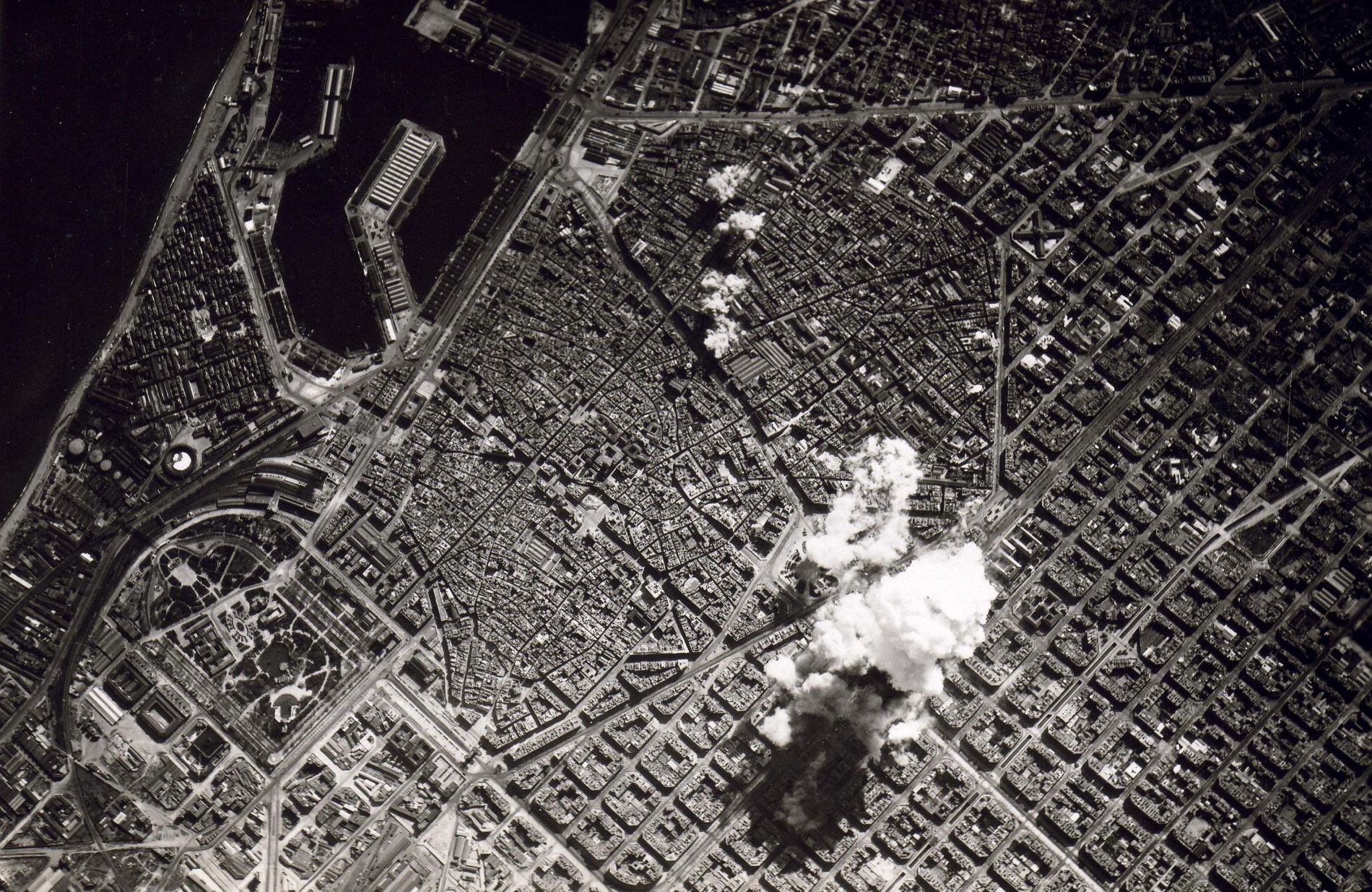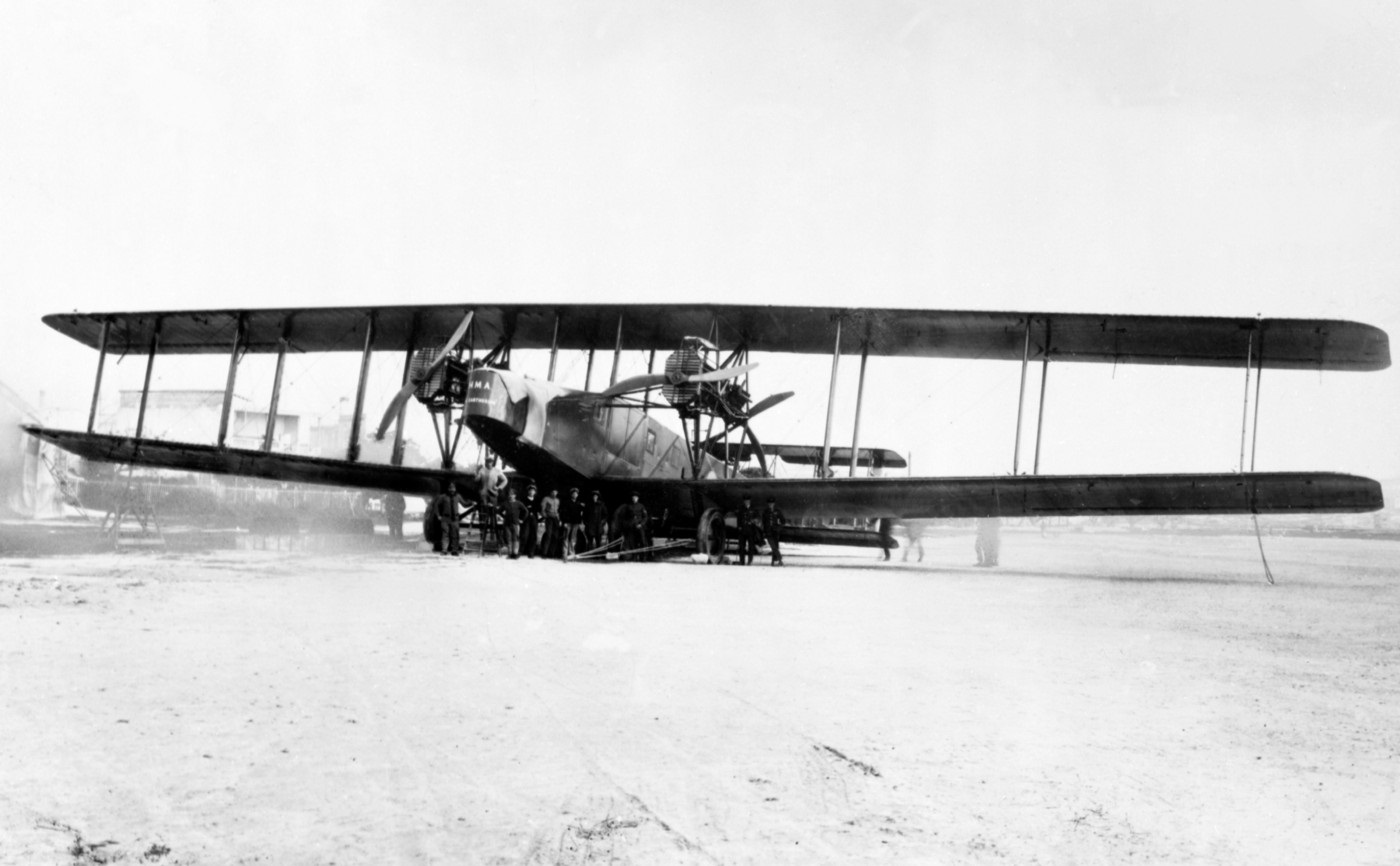The Bombing of Gernika
Bombardment. Description and Types

Terror bombing of Barcelona in March 1938
A bombardment is an air attack on a land or naval target consisting of the launching of various types of projectiles (explosive, incendiary, or toxic) and, sometimes, the aerial strafing of land or sea positions.
Depending on the objective of the bombardment, they can be divided into three types:
- Tactical bombing: Aerial bombardment directed against targets of immediate military interest in the context of a battle, such as troops, facilities, or military equipment. Airplanes provide proximity air support to ground forces, directly reinforcing operations on the ground or, where appropriate, carry out air interdiction missions, attacking targets that are distant from the battlefield but that are part of the theater of operations (such as destroying a bridge that will be used by enemy troops during a battle). Aircraft used for these actions are medium-sized bombers, ground attack aircraft, and even fighters.
- Strategic bombing: An air mission independent of naval or land operations, directed against specific objectives of military interest located far from combat zones, such as factories and warehouses, communication nodes, ports, or airports. During these actions, large bombers with a long flight range are preferred, as well as ground attack aircraft.
- Terror bombing: An air mission whose purpose is to destroy the enemy's morale and, consequently, provoke its surrender, through an intense and unexpected attack against a target of great symbolic value. The higher the level of material destruction, the more effective terror bombings are. The performance also increases when a campaign of constant and prolonged bombing is orchestrated. The most common targets are open or defenseless cities and primarily civilian victims.
Prehistory of terror bombing

Handley Page V/1500 'Old Carthusian.’ The plane that bombed Kabul in 1919
Cities have been subject to bombings for a long time. Henry T. Coxwell, an English aeronaut, dropped the first bomb from an aircraft in 1848. In August 1849, during the First Italian War of Independence, the first aerial bombardment was recorded. On that occasion, the Austrian artillery general Franz von Uchatius sent, from the ships besieging the city, several self-controlled balloons armed with 15 kilos of explosives ready to automatically deflate over the target.
By 1899, there were so many aerial bombardments that the First Hague Convention prohibited aerial bombing.
The first aerial bombing of a ground target from a "heavier-than-air flying machine,” or a plane, took place in 1911, eight years after the Wright brothers invented the self-propelled airplane. On that occasion, Second Lieutenant Giulio Gavotti, a member of the Corpo di Spedizione (Italian Expeditionary Corps), decided to put four 2 kg grenades filled with picric acid (TNP) in a bag and throw them over the oasis of Tajura from a Taube monoplane on an exploration flight during the Tripolitanian War, or Guerra di Libia.
After the terror campaigns of the Zeppelins during World War I, an event would revolutionize the history of aerial bombing in 1919. It happened when Emir Amanullah Khan declared the independence of Afghanistan, sparking the Third Afghan War. British expeditionary troops, depleted after budget adjustments post-1918, could barely hold back the insurgents' attacks. After bombing Dakka and Jalalabad, the British command decided to experiment with a new kind of warfare: a single aircraft, a Handley Page V/1500 named Old Carthusian, was sent to bomb Kabul. The operation was carried out on May 24, 1919. The bomber, piloted by two people, dropped four 50-kilogram and sixteen 9-kilogram bombs on the emir's palace. The attack had a great psychological impact, and after a series of new bombings, the emir's troops capitulated in early June.
The message was resounding: the British had won a war by using a single aircraft, in a six-hour operation, with no casualties, minimal cost, and out-and-out efficiency. European administrations began to invest in bombers and European air warfare experts developed theories about terror bombing, "total war," or the "mechanical army." A new way of making war had been invented.
